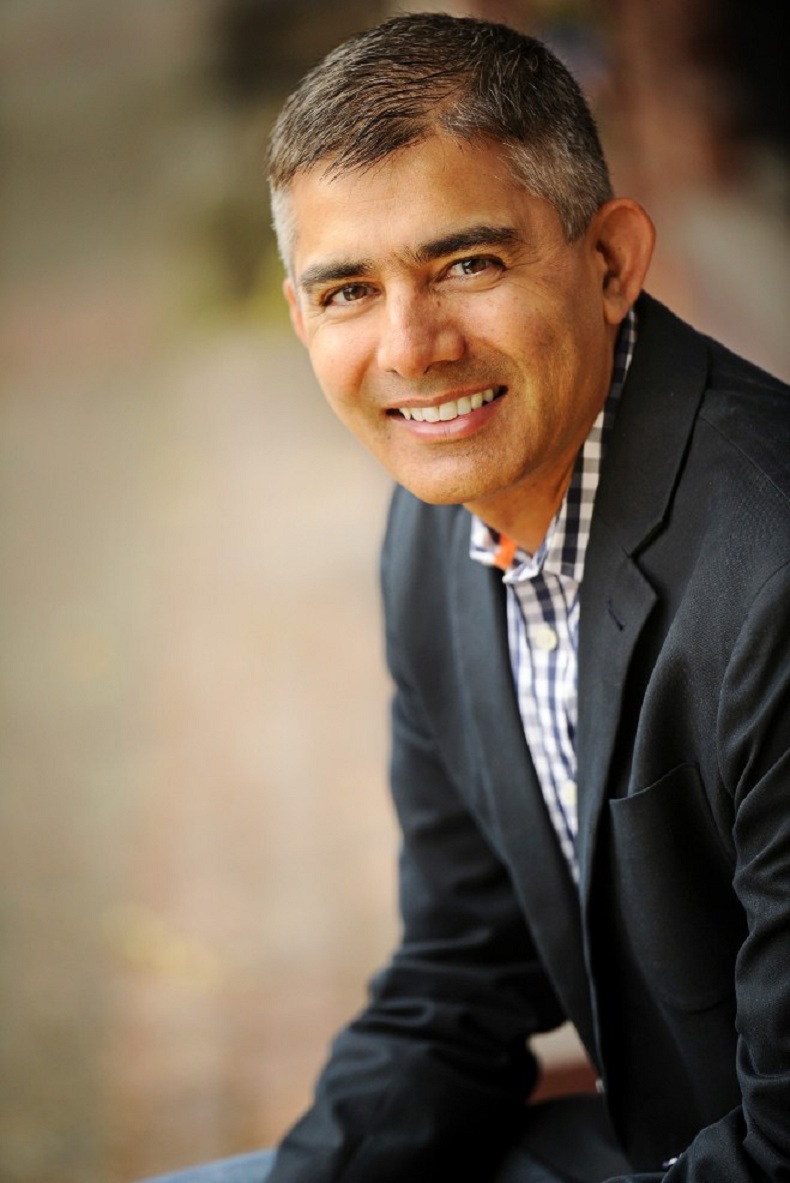The following post originally appeared on Forbes | April 12, 2016
While Africa’s 2015 GDP is down 1.2% from 4.6% in 2014, it is still among the fastest growing regions in world. As a continent with a population of over 1.2B people, massive commodity repositories – 1/10th of the world’s oil, 1/3rd of its mineral reserves, and 2/3rd of the world’s diamonds – and approximately 60% of the world’s uncultivated, arable land, Africa is set to play an increasingly important role as capital continues to shift in the global economy. And as China’s middle class advances their ascent, driving the cost of manufacturing in the region higher, if Africa can effectively develop its infrastructure in the next 1 – 2 decades, it may be well positioned to take up the role of providing low-cost manufacturing to the world. With all of this in mind, if you are a multinational enterprise, or you have multinational clients, and are not keeping a close eye on Africa, you aren’t doing your job.
In an effort to keep their clients ahead of the curve on developments in Africa, each year Ernst & Young puts out their EY Africa Attractiveness Survey, outlining economic and political developments in the continent. Today we hear from Ajen Sita, EY Africa’s CEO, about some of the factors contributing to Africa’s economic growth and the expansion of their middle class. Please see a revised (and edited for readability) version of our exchange below:
On What Numbers To Watch
Parnell: Let’s talk about numbers. At a higher level, what would you say are the most important numbers that we should be paying attention to in Africa’s development? Projects? Capital flow? Job growth?
Sita: All of these numbers and more, really, because you have to understand what’s behind it. As an example, what we see in some markets, particularly in Nigeria and Angola, is that there’s been large amounts of Foreign Direct Investment (FDI) over the last three or four years. But they have typically been single large capital investments, whether it’s been in an oil field or anything in the resources sector, or any form of mining, oil extraction, or gas. Because they are usually single and large, they dominate the headlines due to the capital value involved. However, our experience is that those investments are not necessarily the largest job creators; rather it’s the smaller investments that have been having a more significant impact on that front.
So this is where FDI projects have come into play: Typically, the larger the number of projects, the greater the level of diversification. Markets that are receiving large numbers of projects also seem to have diverse economies. And it’s not just resource-based economies; they’ve got financial services, consumer, construction, retail – there’s a strong correlation between the number of projects and the number of jobs created.
To answer the question: we have to look at all of it. I certainly wouldn’t say that we don’t need single large capital investments. But you’ve got to look through that and say that in addition to single large investments, what Africa really needs is diverse investments, because those are the ones that create jobs.
On The Relative Importance Of Job Creation
Parnell: So you would say that the creation of jobs is most important in developing Africa?
Sita: From an Africa perspective, the continent clearly needs to create jobs. It has a dramatically growing population crossing the billion people threshold, with the added issue of it being an extremely young population; one of the largest youth populations in the world. Certainly over the next five to ten years, that youth population will also be of work-going age. When you have that demographic, you really do need fast growing economies and the jobs created by them, because you need to be able to absorb those young people into the labor market.
On FDI Decreasing While Capital Investment Increases
Parnell: So with FDI and jobs in mind, the EY Africa Attractiveness Survey 2015 referred to FDI project numbers falling in 2015, but capital investment and jobs growing, which, on the surface conflicts. Can you expand on that?
Sita: That’s one of the anomalies in this report: Project numbers decreased quite significantly, but capital investment is at almost a five year high. That is largely attributable to the single large-scale investments in Ethiopia and Algeria, which have some large real estate housing construction projects, and some infrastructure projects – they have skewed the numbers. Once you’ve stripped out the big investment in Angola, Algeria, and Ethiopia, FDI projects are in fact down. And whilst we do celebrate the large capital, I would say there is also a real concern that the strong growth trajectory that Africa has been on for the last five years, from an FDI capital and projects perspective, has come off quite sharply in 2015.
On Africa’s Performance Relative To The Global Economy
Parnell: Do you think that this is a reflection of Africa’s attractiveness to the market, or more a reflection of the sluggish global economy?
Sita: I think it’s probably a little of both. What we are certainly starting to see is growth in North America rebounding. With regard to Europe, we can see a number of fits and starts in different regions, with some parts of Europe certainly starting to grow. So we’re seeing some level of growth come back in the mature markets. Therefore, some of the capital that was perhaps not happy with the return level is now going back into those markets.
Also, the U.S. has announced the slowdown in its quantitative easing program. There was certainly a lot of so-called “cheap money” in the market that was looking for a home. And with the quantitative easing program slowing down, that money is not there, and so you’re seeing whatever available capital people have going to safer places.
On the other hand, I do think the China slowdown over the last six months has subsequently seen a demand for resources out of Africa come down quite sharply, impacting the number of projects and the level of foreign direct investment coming into the continent.
On The Sentiment Inside Of Africa
Parnell: Can you talk to me about the general sentiment in the continent? Has there been more of a push to better integrate into the global economy?
Sita: African governments – who have enjoyed almost a decade of sustained growth – are realizing that they actually have to compete for their capital now. Today, when you compete with other emerging markets, you compete with China, with Russia, with India. And I don’t believe that enough is being done to increase the competitiveness in African markets, or to compete for that capital. But that realization is now growing quite quickly.
What we’re finding across Africa is that every government is talking about the easing of business regulations; they’re all starting to look at it and how they can simplify inbound investment – whether it’s from the number of days to set up a business, or trying to find ways to get greater certainty in their tax legislation, or creating incentives for inbound investments. In Nigeria, for example, they realized pretty quickly that given their large population and burgeoning middle-class with more disposable income, there was more demand for cars. As they’ve never had a domestic automotive manufacturing industry, they’re now creating a massive incentive program to get the global automotive companies to set up their assembly and manufacturing plants within Nigeria. There are other examples like this.
The realization now is that you do actually have to compete for capital, especially with less liquidity in the world today, so you have to demonstrate that you have something to offer.
On Africa’s Middle Class
Parnell: I apologize for the obtuseness of the questions, given we’re talking about an entire continent (laughs). But at a higher level, can we talk about Africa’s middle-class? What will be necessary to continue to build a middle-class in Africa over the next five years or so?
Sita: If we look at the World Bank’s definition of middle-class, we see it does vary by region. So when we talk of a middle-class in Europe or the U.S. versus Africa, we need to understand that it’s not the same middle-class. Middle-class is defined as the level of disposable income that people would have at the end of the month, and once you reach a certain threshold, that’s how you make it into the middle-class.
What we can see is the growth of African economies over the last decade, with Sub-Saharan Africa having had about 5.5% GDP, and the larger economies like Nigeria have grown at around 8 or 9% GDP. So what that’s done is lift a lot of people out of poverty and into work, and therefore swelled the ranks of the middle-class. The measure of that is the growth of the large cities in Africa. So we’re increasingly starting to talk of large cities, not just countries, whether that is Lagos, Johannesburg, Nairobi or Accra… The cities are starting to take on a shape and life of their own, with the middle-class moving towards cities, and thus, creating greater levels of urbanization, greater eco-systems of jobs and communities and services, etc.
One of the interesting measures when one looks at the middle-class is that when you look at foreign direct investment into Africa, the stereotypical view would be that FDI is all going to natural resources, such as mining and oil, etc. In truth, though, that figure is only about 30%, with 70% of FDI going into the consumer-facing industries such as consumer products companies, retail companies, financial services, construction companies, professional services, and so on. Those are targeted at the middle-class; the new emerging class that is better connected than ever, whether it’s access to the internet or television, and that knows what the best of the world is, and wants those products in their markets. That is what’s creating the consumer middle-class boom in Africa.
On Africa’s Dependence On China
Parnell: It’s difficult to talk about Africa without talking about China. How tied is Africa’s economy to the demands of China? How will China’s slowdown impact Africa’s economy over the next five years or so? Though China is still developing at a good pace, there is a slowdown there, which is projected to continue for a number of years…
Sita: I’ll start by saying that China is Africa’s largest trading partner. In fact, in the Africa Attractiveness report, you may pick up a faint hint of questioning about “how come China is missing from large parts of that report?” And primarily that’s because we used public sources of FDI data, and a lot of the Chinese investment into the continent is done from government-to-government. And so there are projects going on that are not announced. As Africa’s largest trading partner, Africa imports most of its products from China. Also, China is the biggest buyer of Africa’s natural resources, from coal and platinum to other metals and minerals.
The Chinese economy, over the last decade, has seen a lot of liquidity pumped from its central bank into its state-owned entities – who then led the internationalization of the Chinese economy by going into foreign markets and getting the resources that are required to build the infrastructure of a large domestic economy. And now, ten years later, you can see that China is shifting some of that strategy towards investments into its domestic economy, rather than the rest of the world. It’s now clearly entering an era of growth that is driven from its domestic consumer economy.
As you correctly say, growth has come off in China, but by global standards it will still be a high-growth country: around 5-6% and has the large population, etc. So I would say that Africa is already feeling the effects of that shift in strategy, and is already feeling the effects of the slowdown of Chinese investment — and a sharp one at that. What we are seeing, though, is the Chinese government publicly announcing their commitment to continue investing in Africa, to continue pulling resources out of the continent, and I think that will carry on, albeit at perhaps a lower level than over the last decade. As mentioned earlier, Africa’s beginning to realize it will now have to compete for capital, and can’t be dependent on a single customer. It was probably too dependent on a single customer: China.
On Chinese Manufacturing Moving into Africa
Parnell: As the development of China’s middle-class continues, what is the possibility of, or potential for, the movement of manufacturing over to Africa? I think you would agree that as China continues to develop their economy and middle-class, we’re seeing that manufacturing is becoming more expensive…
Sita: Many people will say to you that Africa today feels like what, perhaps, China and India were fifteen years ago. And I think that’s probably correct. As we grow the middle-class and grow the skills base, there’s huge potential to grow the manufacturing sector in Africa. In fact, virtually every government is talking about it, because it’s one of the ways that Africa gets to absorb this growing labor force that I was talking about.
What we’ve already started to see is Chinese companies setting up operations in Africa, and doing a lot of their manufacturing in Africa. In Ethiopia, for instance, the government has set up a large business park just outside Addis Ababa, which is dominated by Chinese companies who are manufacturing products in Ethiopia – the same is being looked at in Nigeria. So as Ethiopia and Nigeria are two of the most populous countries in Africa, it’s no surprise that the Chinese are setting up manufacturing facilities there.
I think, however, that this goes beyond the Chinese. In the automotive industry we see that in the southern part of Africa, South Africa has all the international automotive brands – German, French, etc., with assembly plants in South Africa. The vehicles manufactured aren’t for South Africa or the African market, however; most are destined for North America, Europe, and parts of Asia. I certainly see that trend growing. And we hope to extend it to the food processing and agriculture industries. Africa has the largest tracts of available arable land in the world today. We all know that the world’s population is growing and people need food, so there’s no doubt that we will see not just Middle Eastern companies investing in tracts of land for produce, for instance, but I think we’ll see a new phase of agro-processing on the continent as well.
On U.S. Industries That Will Be Impacted — Positively Or Negatively — By Africa’s Growth
Parnell: What industries in the U.S. will be most affected by Africa’s development over the next ten years or so?
Sita: I would say that we are certainly seeing a strong growth of U.S. investment into Africa, especially in the consumer industries. Examples might be Wal-Mart’s big transaction in Africa, and Coca-Cola having a massive presence and expanding on that. We are also seeing the heavy equipment manufacturers — Caterpillar, for instance — bringing their equipment into the continent to take advantage of growth in agriculture and mining, or other infrastructure programs. There are also the likes of GE making massive investments in the power sector. Considering that Africa has a significant deficit of power generation – power is one of the big enablers for economic growth. In fact, the Obama administration has prioritized power in Africa, and so we’ve seen significant interest by U.S. companies to invest in that sector.
I talked before about the automotive industry, and we are now seeing the likes of Ford with assembly plants in South Africa. Looking at places like Nigeria, those markets are opening up, too. What I might say we don’t find so much from the U.S. is the U.S. banks. The private equity funds are certainly here, as are the investment banks, but you won’t find your traditional retail banks here. Africa tends to be dominated either by its African champions or Europe. So really there is so much potential. In terms of an industry that could have a negative impact on the U.S., I can’t think of any in particular. I really do think that the U.S. has the ability to step in and develop what China has not been able to carry forward.
Email: dparnell@davidjparnell.com Twitter: @davidjparnell
Books: The Failing Law Firm: Symptoms And Remedies; In-House: A Lawyer’s Guide To Getting A Corporate Legal Position



